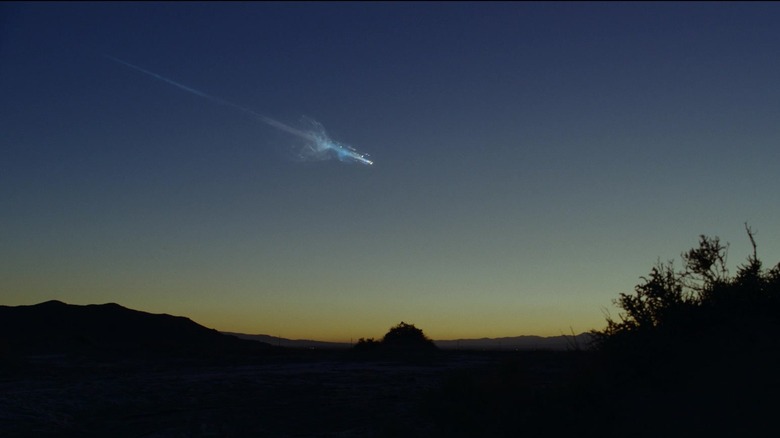Top Gun: Maverick's Mach 10 Aircraft Speed Has Never Been Achieved In Real Life
It's easy to get caught up in the events of an exciting movie and want to become part of the action. Just ask the U.S. Navy. In the days following the release of 1986's "Top Gun," they saw an 8% increase in recruitment. People wanted to be like the guys on the big screen, take part in oily volleyball matches, and talk too close to each other's faces.
So it stands to reason that, following 2022's "Top Gun: Maverick," viewers would be out there trying to relive the sequel. The easiest way to do this, at a guess, would be by hopping into the cockpit of an experimental Darkstar aircraft and getting it on the redline overload, flying a hair over Mach 10 in order to teach Ed Harris a thing or two about ... something. Planes going fast.
The reason that you don't hear much about this sort of behavior on the local news? It's not just the embarrassingly low number of Darkstar jet planes, currently estimated to be in the low-zeroes. It's the fact that nobody — not one solitary person — has ever moved anywhere close to Mach 10. Not even Tom Cruise. Not even while he was shooting all of his own stunts for "Magnolia."
Top Gun: Maverick set some unrealistic expectations
As you probably know, because you're so smart, a Mach number represents velocity divided by the speed at which sound travels in a given medium. In the sort of super dumbed-down terms that someone like a writer at an entertainment website would understand, it's increments of the speed of sound, although sound moves at different speeds in different environments, so it varies from one place to another. By saying that Maverick was traveling Mach 10.2 at the beginning of "Top Gun: Maverick," we're saying that he was traveling 10.2 times faster than the speed of sound — around 7,800 miles per hour at sea level.
Why haven't jet pilots crossed this objectively badass threshold? It's not for a lack of wanting to look cool. The problem comes down to design complications, technicalities, and the issue of how badly a pilot wants to keep their brains from leaking out of their ears.
The difficulties of designing an aircraft capable of making it from Seattle to Chicago in roughly as long as it takes to finish a Quibi aside — more on that later — there's the matter of G-force, the sneaky little side effect of acceleration that makes people's faces go crazy and then fall asleep in those NASA chairs that spin around really fast. Like "Top Gun: Maverick" tells you, even highly-trained pilots have a difficult time dealing with 9G's for more than a couple of seconds. The sustained acceleration necessary to push a person over Mach 10 would, without some really impressive sci-fi, have a pilot feeling the pull of gravity usually reserved for commuter cars and medium-sized horses.
Pilots live fast, just not that fast
Now, let's look at the difficulties of building an aircraft capable of reaching Mach 10, even if it is just going to fall apart like a big baby afterward as it does in "Top Gun: Maverick."
In October of 1967, William "Pete" Knight set the current airspeed record in the North American X-15 rocket plane, traveling at a bone-shattering Mach 6.72. That's a nearly 60-year-old record that has yet to be broken. There are, like, so many good reasons for that. During the flight, the X-15's outer shell was reported to have reached temperatures of as much as 1,200 degrees Fahrenheit, or around the melting point of aluminum. Imagine having to deal with that and also having to fight mummies. Tom Cruise would never get anything done.
There's a sneaky caveat to all of this: Since Mach numbers are all about an object's velocity relative to the speed of sound, and since sound doesn't travel in space, there have actually been plenty of people who traveled significantly faster than the 7,800-ish miles per hour that Maverick managed in "Top Gun: Maverick." The crewmembers of Apollo 10 currently hold the Guinness World Record for human speed, clocking in at 24,816.1 miles per hour on May 26, 1969. You could say that they had a need for speed going really fast.


